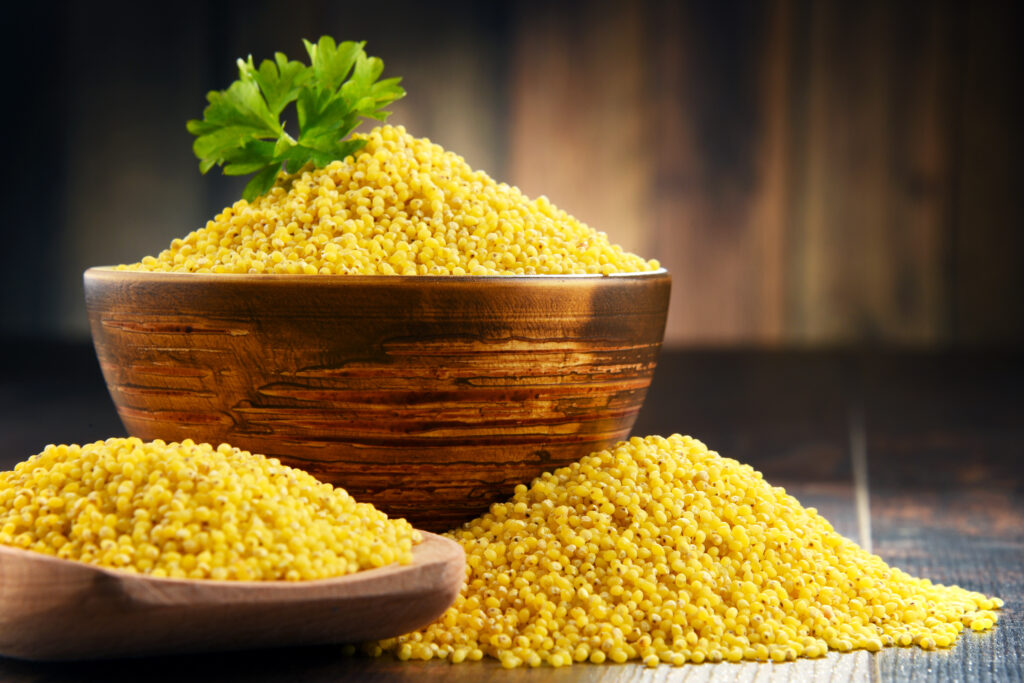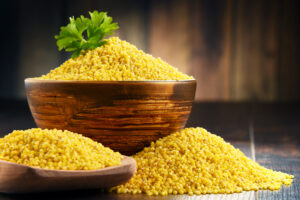

Millets are recognized as unpolished, semi-polished, or polished. So… what are the differences?
Unpolished millets – After removing the husk, the outer layer of the millet which is rich in lignans (compounds responsible for preventing cell damage, cell death, and cancer) is fully intact. Therefore, unpolished millets are beneficial for medicinal purposes. However, unpolished millets have a short shelf life and require long hours of soaking in water (preferably overnight) to avoid poor digestion.
Semi-Polished millets – After removing the husk, part of the outer layer is removed to ensure a longer shelf life of two years, and easy digestion even without requiring long hours of soaking in water. Moreover, semi-polished millets retain most of the nutrients; making them beneficial to maintain good health.
Polished millets – After removing the husk, the outer layer is fully removed. Therefore, polished millets are not recommended as most of the nutrients are lost. Also, there is a chance for polished millets to be adulterated with rice grains (up to 50-60% rice is sometimes mixed with polished millet grains).
How to tell the differences? Polished, semi-polished, and unpolished millets can be identified by their colour. Polished millets are pure white, whereas semi-polished and unpolished millets have their own individual colours. In addition, unpolished millets will contain a dot on top of each grain and semi-polished millets will contain a dot on top of some grains. If you’re having a hard time finding the dots, try spreading some millet out on a dark surface and taking a picture on your phone. When you zoom in on your photo, you should be able to see dots if the millet is unpolished or semi-polished.
Buy S & V MILLETS at https://svmillets.com/shop/

